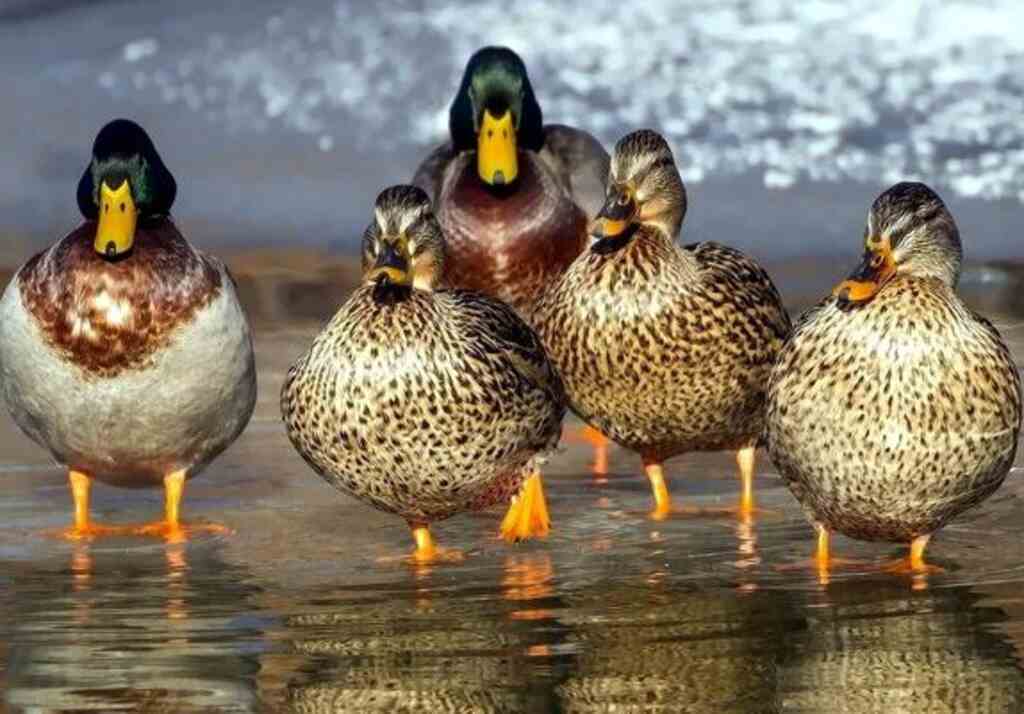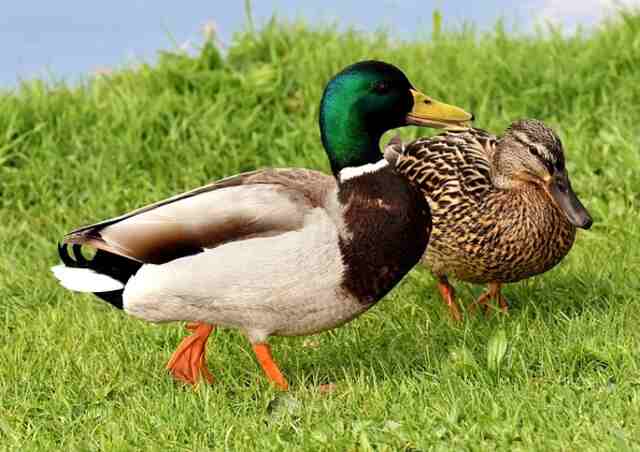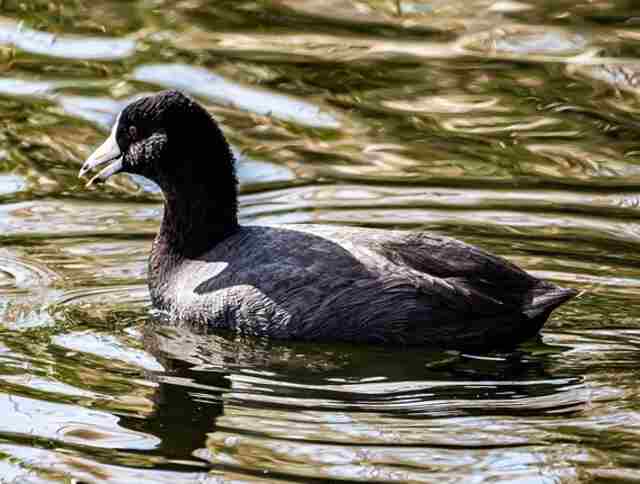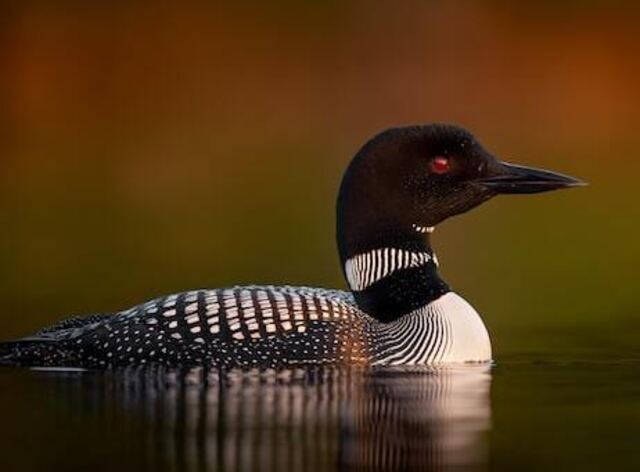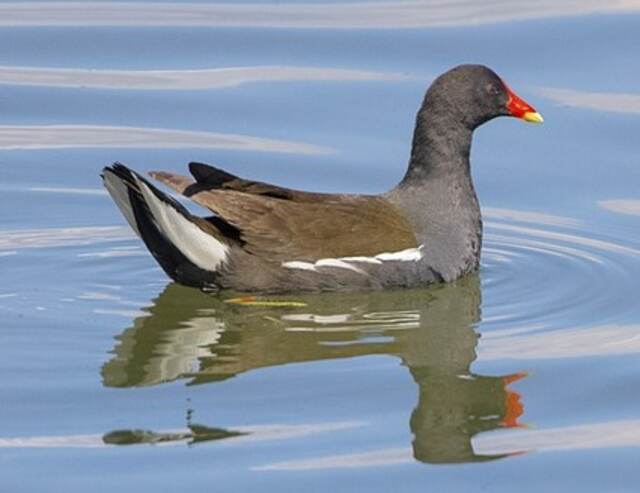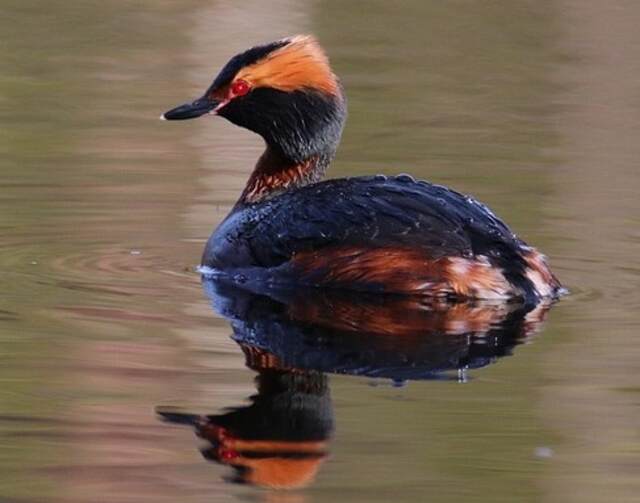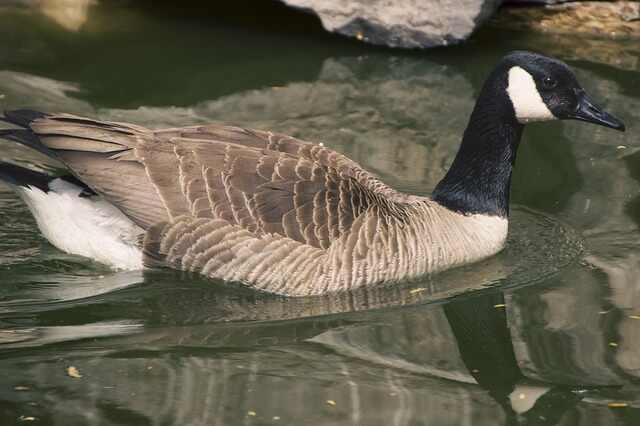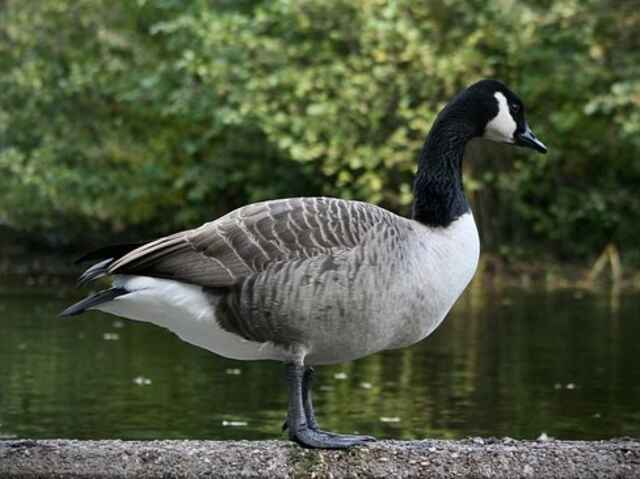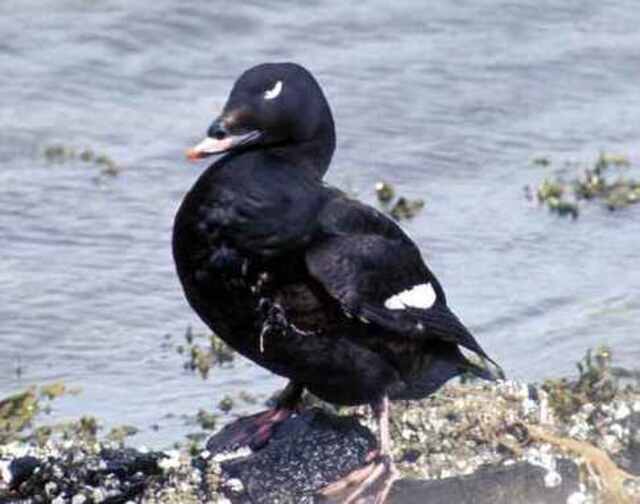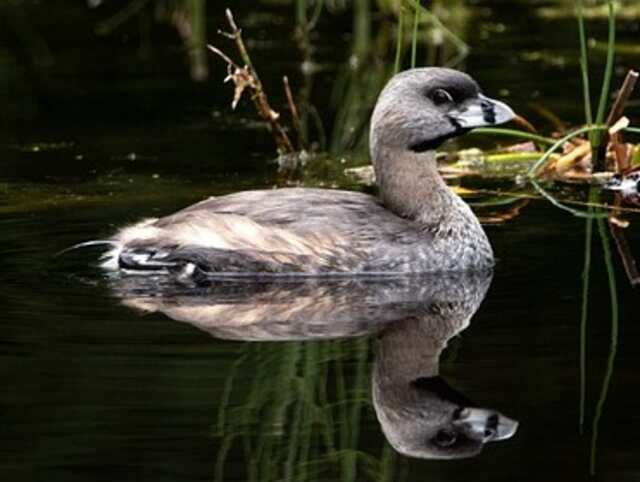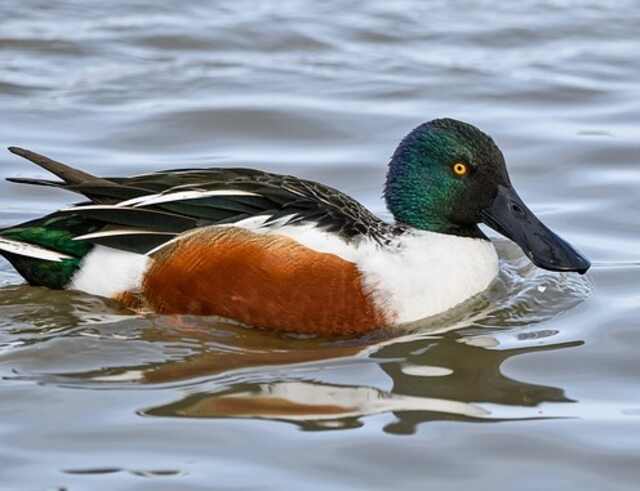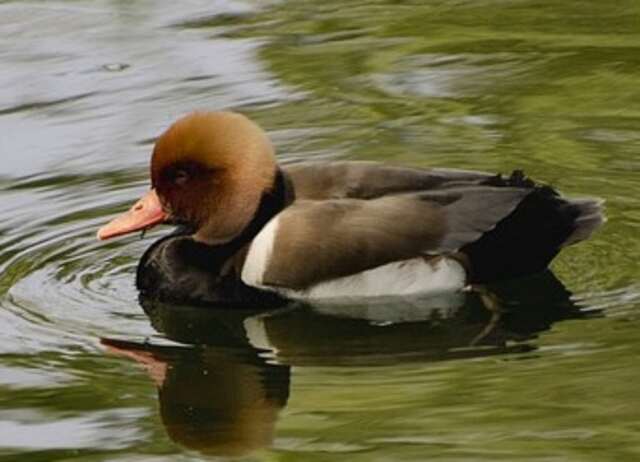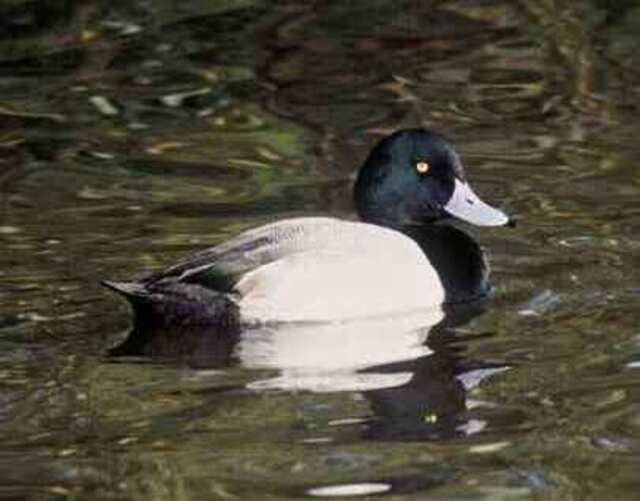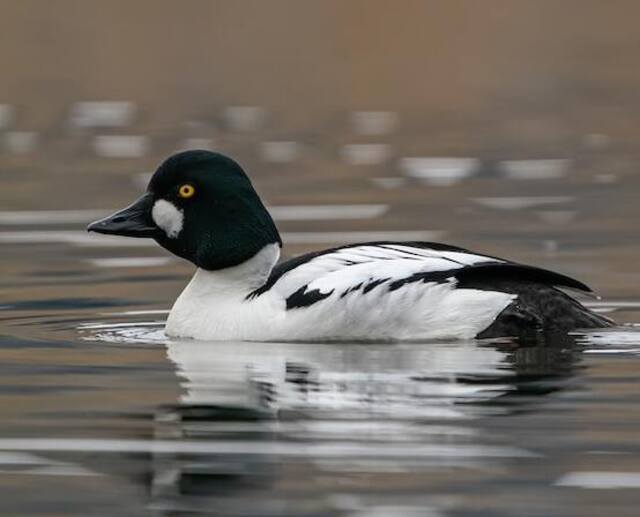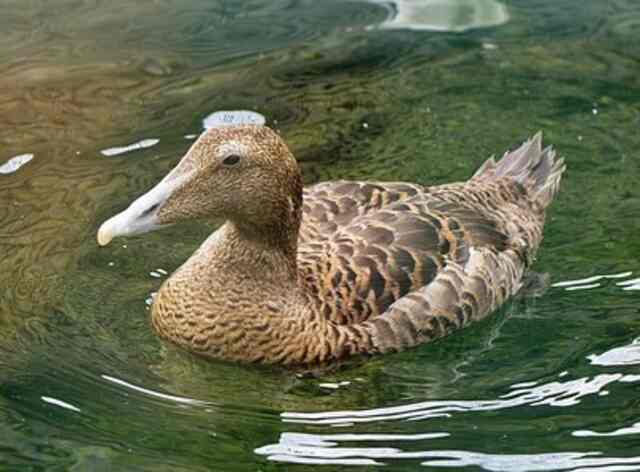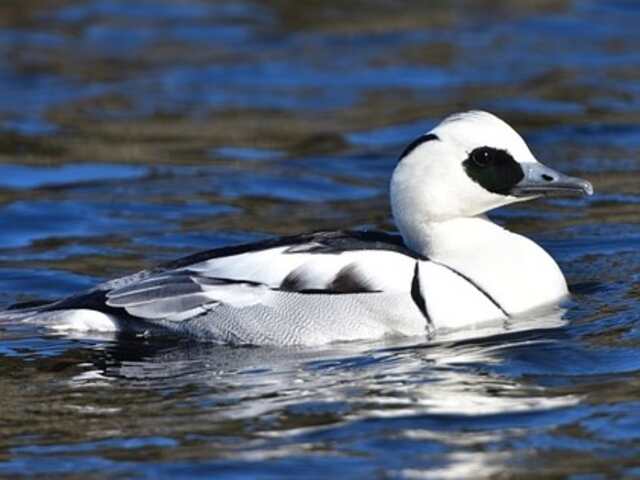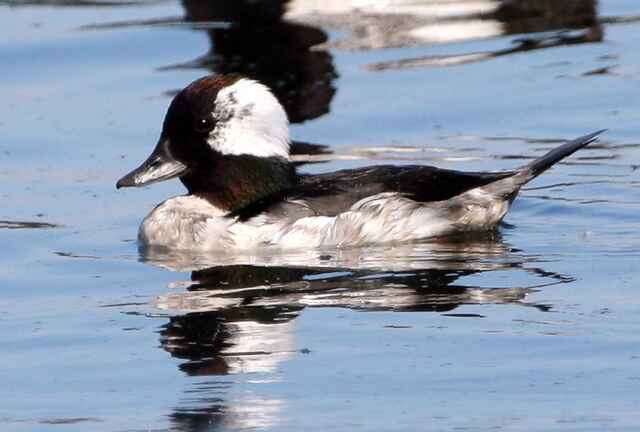Are you a birdwatcher? Have you ever seen a bird that looks like a duck, but isn’t one? Believe it or not, there are several species of birds that look like ducks but aren’t. Knowing how to identify them accurately is important for many reasons – from understanding their behavior and habitat to aiding conservation efforts.
In this blog post, we’ll be exploring these avian lookalikes and the importance of being able to recognize them. So grab your binoculars and let’s get started on our journey into the fascinating world of duck doppelgängers!
Background Information on Ducks
As a bird enthusiast, I’ve always been fascinated by ducks. They’re some of the most recognizable and beloved birds in the world, with their distinctive waddling gait, quacking calls, and vibrant plumage.
But what makes ducks so unique, and why are they such a popular bird species? Let’s explore their physical characteristics, habitat and behavior, diet, and cultural significance in more detail.
Physical characteristics of ducks
Ducks are medium to large-sized birds, with a streamlined body, webbed feet, and a broad, flat bill. Their feathers come in a wide range of colors and patterns, from the classic mallard green and brown to the vivid blue and orange of the mandarin duck.
Male ducks often have more colorful plumage than females, as they use it to attract mates during breeding season. One of the most distinctive physical features of ducks is their waterproof feathers.
These feathers are coated in a special oil that repels water, allowing ducks to stay dry and warm even in the wettest of environments.
Ducks also have a unique respiratory system that allows them to extract oxygen from air and water, making them highly adaptable to their aquatic habitat.
Habitat and behavior of ducks
Ducks are found all over the world, from the Arctic tundra to tropical wetlands. They’re highly adaptable birds, able to thrive in a wide range of aquatic environments, including rivers, lakes, ponds, and coastal estuaries.
Ducks are social animals, often forming large flocks during migration and winter months. They’re also highly vocal, with a variety of calls and vocalizations that are used for communication and courtship.
One of the most fascinating aspects of duck behavior is their courtship rituals. Male ducks will often perform elaborate displays to attract mates, including head bobbing, tail wagging, and flapping their wings.
Once they’ve found a mate, ducks will form monogamous pairs for the breeding season, with females laying up to a dozen eggs in a carefully constructed nest.
Diet of ducks
Ducks are omnivorous birds, meaning they eat both plant and animal matter. Their diet typically consists of aquatic plants, seeds, insects, and small fish and crustaceans. Some species of ducks, like the merganser, have specialized bills and digestive systems that allow them to eat larger fish and crustaceans.
Why ducks are a well-known and popular bird species?
Ducks have been an important part of human culture for centuries. They’re often depicted in art, literature, and folklore, and are popular subjects for hunting and birdwatching.
In addition, ducks play an important ecological role, helping to control aquatic vegetation and serving as an important food source for other animals.
Overall, ducks are fascinating and charismatic birds that have captured the hearts and imaginations of people all over the world.
Whether you’re watching them on a peaceful pond or enjoying a delicious duck dinner, these birds are sure to delight and inspire you.
Birds That Look Like Ducks
American Coot
American coots are small, black-feathered birds that are often mistaken for ducks. They have white beaks and red eyes, and their bodies are flattened and streamlined to make swimming and diving easier. American coots can be found throughout North and Central America, in both freshwater and brackish water habitats. They feed on a variety of aquatic plants, insects, and small fish, and they are often seen diving to the bottom of shallow waters in search of food.
In terms of similarities and differences with ducks, American coots share many similarities in terms of their range, habitat, and diet. Both birds can be found in freshwater and brackish water habitats, and they feed on a similar diet of aquatic plants, insects, and small fish. But, there are some significant variations between the two types.
American coots are smaller than most ducks and have a distinctive black coloration. They also have long yellow-green legs with very large lobed toes, and has a chicken like beak shape and are less likely to take to the air than ducks. Additionally, American coots are more social than ducks and are often seen in large flocks.
Common Loon
The Common Loon, also known as the Great Northern Diver, is a striking waterbird with a distinctive black and white checkered back and black head. Their range spans across North America, from Alaska to the northern United States, and they are commonly found in freshwater lakes and rivers.
Their unique call, a haunting tremolo, can often be heard echoing across the water. Common Loons are expert divers, capable of diving up to 200 feet deep in search of their preferred diet of fish, including smallmouth bass and yellow perch.Although often mistaken for ducks due to their similar aquatic lifestyle, Common Loons are a distinct species with several distinguishing factors.
Unlike ducks, they lack webbed feet and have solid bones, which allow them to dive deeper and stay underwater longer. They also have a more streamlined body shape, that is 2 times larger than the duck and a distinct white necklace around their neck. In terms of habitat, ducks are more commonly found in both fresh and saltwater habitats, while loons stick to freshwater.
Ducks also have a more varied diet, including plants and invertebrates, in addition to fish. Despite their differences, both species are beloved by birdwatchers and play a vital role in their respective ecosystems.
Common Moorhen
The Common Moorhen also knwn a the Gallinule is a bird species found worldwide in freshwater wetlands. They have distinctive red and yellow beaks, dark feathers, and white markings on their tail and wings. These birds are omnivorous, feeding on aquatic plants, insects, and small fish. They are known for their ability to swim and dive underwater, using their wings for propulsion.
The Common Moorhen is a fascinating bird species that adds a unique touch to any wetland ecosystem. While they may resemble ducks in appearance, there are several differences between the two bird species. Unlike ducks, Common Moorhens have a slender body and a long, thin beak.
They are also typically smaller in size than ducks. While ducks are found in a variety of habitats, Common Moorhens tend to stick to freshwater wetlands. Additionally, while both species are omnivorous, Common Moorhens primarily feed on plants and insects, whereas ducks may also consume larger prey such as fish.
Overall, these unique and distinctive characteristics make the Common Moorhen a fascinating species to study and observe in the wild.
Horned Grebe
The Horned Grebe is a small, freshwater diving bird with distinctive black and white plumage and a striking red eye. They are found throughout the Northern Hemisphere, from North America to Europe and Asia. These birds prefer freshwater habitats, such as marshes, lakes, and ponds, and feed primarily on small fish, crustaceans, and insects.
During the breeding season, Horned Grebes can be spotted performing elaborate courtship displays, including diving and swimming in synchronized pairs. Compared to ducks, Horned Grebes are smaller in size and have a more streamlined body shape.
Their plumage is also distinct, with black and white stripes and a distinctive red eye. They are found in similar habitats to ducks, such as freshwater lakes and ponds, but are less commonly seen on land.
While ducks are primarily herbivores, feeding on plants and seeds, Horned Grebes are carnivores, with a diet consisting of small fish and crustaceans. Unlike ducks, Horned Grebes are excellent divers and swimmers, spending much of their time underwater to catch prey.
Brant Goose
Brants, also known as Brent geese, are small to medium-sized birds that belong to the goose family. They have a dark brownish-black head and neck, with a white patch on their cheeks, and a grayish-brown body. Brants are found in the coastal regions of the Arctic and Subarctic, from Alaska to the eastern Canadian Arctic, and migrate to wintering grounds along the eastern and western coasts of North America.
They typically feed on marine plants such as eelgrass, seaweed, and algae, and sometimes on small invertebrates. Brants and ducks share many similarities, including their water-loving nature and migration habits. However, there are several distinguishing factors that set them apart.
For example, ducks have a more varied diet, feeding on plants, insects, and small animals. They also have a wider range of habitats, including wetlands, lakes, and rivers. In terms of appearance, ducks come in a wider range of sizes, colors, and patterns, while Brants have a more uniform coloration.
Overall, while both birds have similar habits and behaviors, their distinct characteristics make them easy to tell apart for the avid birdwatcher.
Canada Geese
Canada Geese are a common sight in North America, known for their distinctive black heads, white cheeks, and long necks. These large waterfowl are typically found near freshwater habitats such as ponds, lakes, and rivers, but can also be found in urban areas such as parks and golf courses.
Their diet consists of a variety of vegetation, including grasses, sedges, and aquatic plants. They can weigh up to 14 pounds and have a wingspan of up to 6 feet, making them one of the largest waterfowl species in North America. In contrast to ducks, Canada Geese have a longer neck and larger body size.
They also have a more pronounced and elongated bill that is adapted for grazing on land. While ducks are known for their colorful plumage, Canada Geese have a more muted coloration, with shades of brown, gray, and white. They can also be distinguished by their distinctive honking call, which can often be heard in flight or while on the ground.
Like ducks, Canada Geese are migratory birds, with populations found across North America, but can also be found year-round in certain areas with suitable habitat.
White-winged Scoter
White-winged Scoters are striking sea ducks with a distinct appearance. Males are mostly dark and have a striking white patch around their eye, while females have a dark chocolate-brown head with a couple of white patches on the sides. These diving ducks can be found along the Pacific and Atlantic coasts of North America, breeding in the boreal forests of Alaska and Canada.
They prefer to feed on mollusks, crustaceans, and small fish, diving up to 100 feet below the surface to retrieve their prey. White-winged Scoters are known for their preference for the ocean’s rough waters and can often be seen riding the waves in search of food. Although similar to ducks, White-winged Scoters have distinguishing features that set them apart.
Unlike ducks, they have heavier and rounder bodies and shorter, stubbier bills. They prefer to inhabit open ocean habitats, compared to ducks’ preference for freshwater wetlands. White-winged Scoters feed on different types of prey, such as mollusks and crustaceans, compared to ducks’ diet of seeds and vegetation.
Additionally, White-winged Scoters tend to be larger and darker in color, with unique white patches on their wings, while ducks come in a variety of sizes, colors, and patterns. Overall, the White-winged Scoters unique appearance and preferences make it an exciting and distinctive bird to observe.
Common Goldeneye
The Common Goldeneye is a medium-sized diving duck that’s found across North America, Europe, and Asia. These ducks have striking black and white plumage, with a greenish-black head, bright yellow eyes, and a round white patch on their cheeks. They typically inhabit freshwater lakes and rivers, and are known for their excellent diving ability to catch fish, insects, and crustaceans.
During breeding season, the males perform an elaborate courtship display, which includes bobbing their head, puffing out their chest, and making a series of low-pitched grunts. In terms of similarities and differences to other duck species, Common Goldeneyes are known for their distinct appearance, size, and behaviors.
Unlike many ducks, Goldeneyes prefer freshwater habitats and can often be found in fast-moving rivers and streams. They have a distinctively shaped bill, which is shorter and more hooked than that of many other duck species. Additionally, they are known for their agile diving ability, which allows them to hunt underwater with precision and skill.
Overall, these unique characteristics make the Common Goldeneye a fascinating and distinctive bird species that’s well worth observing and learning more about.
Green-winged teal
The Green-winged Teal is a small dabbling duck species that is easily recognized by its vibrant plumage. These ducks are found across North America, from Alaska to the southern United States, and even into parts of Central America. They prefer to inhabit shallow wetlands, marshes, and ponds, and are known for their agile and acrobatic flight patterns.
Their diet mainly consists of aquatic plants and invertebrates, and they are an important prey species for many predators in their range. Although the Green-winged Teal shares some similarities with other duck species, such as their dabbling feeding behavior and aquatic habitat preferences, they have several distinguishing factors.
Compared to other ducks, they are relatively small in size and have distinctive green patches on their wings that give them their name. They also have a unique whistling call and tend to fly in small flocks rather than large groups. Overall, the Green-winged Teal is a fascinating and unique species that is well worth observing in the wild.
Pied-Billed Grebe
Pied-billed Grebes are small, chunky waterbirds found throughout North and South America. They are characterized by their distinctive black beak with a white band near the tip, which gives them their name. These birds inhabit freshwater habitats such as marshes, ponds, and lakes, and they are excellent swimmers and divers.
The food they eat primarily comprises small fish, crustaceans, and insects. Pied-billed Grebes are also known for their unique calls, which sound like a series of low, muffled grunts. In terms of similarities and differences to ducks, Pied-billed Grebes share a similar habitat and diet with many species of ducks.
However, they are smaller in size and have a different appearance, with their distinctively marked beaks and brownish-gray plumage. Unlike ducks, Pied-billed Grebes are not known for flying long distances and tend to stay closer to the water.
They also have a unique behavior of “lobstering,” where they swim underwater with their body submerged and their head and neck sticking out of the water. Overall, Pied-billed Grebes are fascinating birds with unique characteristics that set them apart from their duck counterparts.
Mergansers
Mergansers are a group of diving ducks characterized by their narrow, serrated bills, which are perfect for catching fish. These waterfowl are found in North America, Europe, and Asia, with the hooded merganser being the most widespread. They prefer freshwater habitats such as lakes, rivers, and ponds, but can also be found in saltwater environments during migration.
Mergansers feed primarily on fish, but also consume crustaceans, mollusks, and aquatic insects. In terms of similarities and differences to ducks, mergansers are in fact a type of duck, but are distinguished by their unique physical characteristics. Unlike most ducks, mergansers have a slender, streamlined body and a longer neck.
They also have a narrower and more pointed bill compared to the broader, rounder bill of most ducks. While ducks are found in a wide range of habitats, including freshwater and saltwater environments, mergansers tend to prefer freshwater habitats.
Additionally, while both ducks and mergansers feed on fish and other aquatic prey, mergansers have a more specialized diet that consists mostly of fish.
Northern Shoveler
The Northern Shoveler, also known as the “Spoonbill,” is a dabbling duck that can be easily recognized by its distinctive, spoon-shaped bill. These ducks can be found throughout much of North America, Europe, and Asia, as well as in parts of Africa and Australia.
They prefer to inhabit wetlands, marshes, and shallow ponds, where they feed on aquatic plants, seeds, and invertebrates. With their large bills and specialized feeding habits, they are adapted to filter feed on small organisms in the water. Their plumage is brightly colored, with a mix of blue, green, chestnut, and white.
Shovelers can often be seen swimming in large flocks and performing synchronized swimming movements. While Shovelers share some similarities with other types of ducks, they have several distinguishing characteristics that set them apart. For example, their unique bill shape and filtering method of feeding sets them apart from many other dabbling ducks.
They also tend to prefer shallower water than some of their duck cousins, and their plumage tends to be more brightly colored. In terms of size, Shovelers are medium-sized ducks, with males weighing in at around 1.5 pounds and females slightly lighter.
Shovelers are social birds and can often be seen flocking together, often with other species of ducks. Overall, the Northern Shoveler is a unique and fascinating bird that adds color and character to any wetland or pond it calls home.
Pochard
Pochards are medium-sized diving ducks with distinctive red eyes and a rounded head. They are known for their striking black and white plumage, which varies depending on the species. These ducks are commonly found in Europe and Asia, with some species also occurring in Africa.
Pochards prefer to inhabit freshwater lakes, ponds, and marshes, where they feed on a diet of aquatic plants, insects, and small crustaceans. They are known for their diving abilities and can remain underwater for up to 20 seconds. While pochards may bear some similarities to ducks, there are also some notable differences between the two.
For instance, pochards are generally smaller than most duck species, with a wingspan of around 70-90 cm. Additionally, they tend to have a more compact body shape and a rounder head. In terms of habitat, pochards typically prefer freshwater environments, whereas ducks are more adaptable and can thrive in a variety of habitats.
Finally, pochards are known for their distinctive red eyes, which set them apart from most duck species. Overall, pochards are fascinating and unique birds that are well worth studying for any bird enthusiast.
Scaup
Scaups are a fascinating species of diving ducks that are found in North America, Europe, and Asia. They are characterized by their unique, spoon-shaped bills and striking black and white plumage. Scaups can be found in a variety of habitats, including lakes, rivers, and coastal areas.
Their diet consists primarily of mollusks, crustaceans, and aquatic plants, which they forage for while diving underwater. During breeding season, male Scaups will display a distinctive courtship behavior known as “head-throwing,” in which they toss their heads back and forth rapidly.
While Scaups are often mistaken for other species of ducks, such as Ring-necked Ducks and Lesser Scaups, there are several distinguishing factors to look out for. Scaups are larger and have a more rounded head than Ring-necked Ducks, and have a blue bill with a black tip compared to Lesser Scaups’ mostly black bill.
Scaups also have a different range, with the Greater Scaup being found primarily in the Northern Hemisphere, while Lesser Scaups are found across North America. Additionally, Scaups tend to prefer deeper water and more open habitats than other ducks. Overall, Scaups are a unique and fascinating species of duck with their own set of distinguishing characteristics.
Goldeneye
Goldeneyes are striking diving ducks with black and white plumage, a distinct green head, and bright yellow eyes. Found across North America and Eurasia, these birds prefer freshwater habitats like lakes and rivers, where they feed on aquatic invertebrates, small fish, and plant material.
Known for their impressive diving skills, Goldeneyes can dive up to 40 feet deep in search of food. They are also capable of flying at speeds of up to 60 miles per hour, making them a thrilling sight for birdwatchers. While Goldeneyes share many physical characteristics with ducks, they have several distinguishing factors.
For one, they have a more streamlined body and a flatter head shape, which makes them better adapted for diving. They also tend to have a more pronounced white patch on their cheek, while ducks typically have a more uniform color pattern. In terms of habitat, Goldeneyes prefer freshwater habitats, while ducks can be found in a variety of environments.
Additionally, while ducks are known for their dabbling behavior, Goldeneyes are diving birds that spend most of their time underwater in search of food.
Eider
Eiders are a large species of sea duck known for their distinct appearance and unique behaviors. These birds are characterized by their bulky body, heavy bill, and colorful plumage. They are commonly found in the northern hemisphere, particularly in the Arctic and sub-Arctic regions.
Eiders prefer to live in rocky coastal areas and feed on a diet of mollusks, crustaceans, and small fish. These ducks are also known for their unusual breeding habits, with males taking on the role of caring for the young. When it comes to similarities and differences between Eiders and other ducks, there are a few key distinguishing factors.
While they share some similarities with their duck relatives, Eiders have distinct size and appearance characteristics. They are larger than most ducks and have a distinctive shape and coloration. Additionally, Eiders tend to live in colder and more remote regions compared to other ducks.
They also have unique dietary preferences, with a focus on mollusks and crustaceans. Finally, Eiders have unique behaviors, particularly during breeding season, where males take on a more active role in parenting.
Smew
The Smew (Mergus albellus) is a small diving duck species found in Europe and Asia. It has a distinctive black and white plumage with a thin, serrated bill and a rounded head. The males have a striking appearance, with a white body and black markings around the eyes and neck.
The Smew’s range includes freshwater lakes and rivers in boreal and temperate forests. Ducks are omnivorous birds and their diet is quite diverse. They typically feed on a variety of aquatic plants, seeds, insects, and small aquatic animals such as fish and crustaceans. These ducks are monogamous and typically breed in tree cavities or nest boxes. Compared to ducks, Smews have a smaller body size and a more streamlined shape, enabling them to dive for longer periods and at greater depths.
Their diet and habitat preferences also differ slightly, as they tend to prefer smaller bodies of water with less vegetation. Smews are less social than ducks and are often seen in pairs or small groups. Their behaviors and vocalizations also differ, with Smews producing a high-pitched whistling sound rather than the typical quack of ducks.
Despite their differences, both ducks and Smews share a love of water and a fascinating beauty that never fails to captivate birdwatchers.
Bufflehead
Buffleheads are small, diving ducks that are found throughout North America, from Alaska to the eastern United States. They are easily recognizable due to their striking black and white plumage, with the males sporting a distinctive iridescent green patch on the head.
Buffleheads prefer to live in freshwater habitats such as ponds, lakes, and rivers. Their diet mainly consists of aquatic invertebrates, mollusks, and crustaceans. Compared to other duck species, Buffleheads are smaller in size and have a distinctive round head with a short neck.
They also have a more rapid wingbeat, which allows them to take off from the water’s surface more easily. They tend to winter in more southern regions, such as the Gulf of Mexico and the Pacific coast of Mexico.
In terms of diet, they are similar to other diving ducks and feed on aquatic invertebrates and crustaceans. While they share similar habitats and behaviors with other duck species, their unique appearance and behaviors make them a sought-after sighting for birdwatchers.
Conclusion
In conclusion, while ducks are certainly a beloved and well-known bird species, there are many other birds that bear a striking resemblance to them.
From the Grebe to the Coot, these birds share many physical and behavioral characteristics with ducks, but also have their own unique features and adaptations.
Whether you’re a bird enthusiast or simply curious about the natural world, exploring the diversity of avian life is always a fascinating and rewarding experience.
Related Post: 23 Fun Facts About Ducks in 2023 (Complete Guide!)

